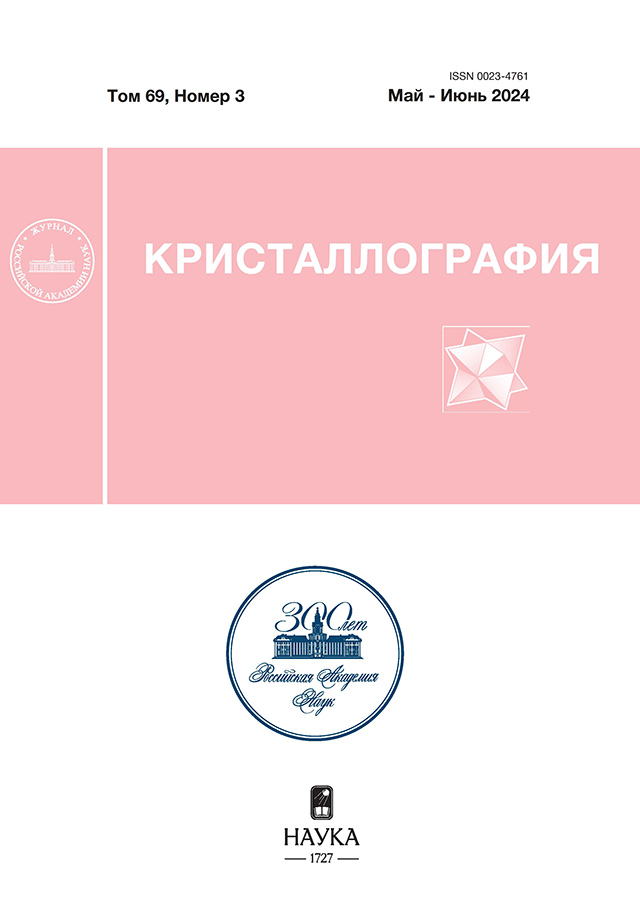The influence of chemical structure spacings on the fluorocopolymers nano-organization
- 作者: Sokolova L.V.1, Pronin D.S.1, Politova E.D.2
-
隶属关系:
- MIREA – Russian Technological University
- N.N. Semenov Federal Research Center for Chemical Physics of the Russian Academy of Sciences
- 期: 卷 69, 编号 3 (2024)
- 页面: 528-540
- 栏目: НАНОМАТЕРИАЛЫ, КЕРАМИКА
- URL: https://rjmseer.com/0023-4761/article/view/673194
- DOI: https://doi.org/10.31857/S0023476124030195
- EDN: https://elibrary.ru/XNUEJG
- ID: 673194
如何引用文章
详细
In ternary fluoropolymers Viton GFLT 600S and Viton GFLT 200S, more types of nanoformations with the size of 3–80 nm are found than in double SCF-26 and SCF-32, while their prehistory changes according to the X-ray diffraction analysis data in the region of large angles. This process is more influenced by the chemical structure of the junctions in the macromolecules than by the molecular weight. The complex and unequal character of change of dynamic viscosity of fluoropolymers with temperature increase is caused by multiple phase transitions. It is shown that fluorocarbon rubber SKF-32 does not transition to the viscous-fluid state up to ~190°C in contrast to three fluoropolymers due to intermolecular nanoformations of 5 nm in size, the strength of which is significantly higher than nanoformations of 3–4 nm in the latter. It was found that the rotational mobility of the TEMPO radical is determined not so much by the intermolecular distances in the disordered part of the copolymers as by the flexibility of the passing chains connecting the ordered formations into a single system.
全文:
作者简介
L. Sokolova
MIREA – Russian Technological University
编辑信件的主要联系方式.
Email: sokolova_mchti@mail.ru
俄罗斯联邦, 119454 Moscow
D. Pronin
MIREA – Russian Technological University
Email: sokolova_mchti@mail.ru
俄罗斯联邦, 119454 Moscow
E. Politova
N.N. Semenov Federal Research Center for Chemical Physics of the Russian Academy of Sciences
Email: sokolova_mchti@mail.ru
俄罗斯联邦, 119991 Moscow
参考
- Аржаков М.С. Релаксационные явления в полимерах. Montreal: Accent Graphics Communication, 2018. 136 с.
- Марк Дж., Эрман Б., Эйринг Ф. Каучук и резина. Наука и технология. Долгопрудный: Интеллект, 2011. 768 с.
- Башоров М.Т., Козлов Г.В., Микитаев А.К. Наноструктуры и свойства аморфных стеклообразных полимеров. М.: РХТУ им. Д.И. Менделеева, 2010. 269 с.
- Волынский А.Л., Бакеев Н.Ф. Структурная самоорганизация аморфных полимеров. М.: ФИЗМАТЛИТ, 2005. 232 с.
- Kozlov G.V., Zaikov G.E. Structure of the Polymer Amorphous State. Leiden: Brill Academic Publishers, 2004. 465 р.
- Полимерные нанокомпозиты / Ред. Ю-Винг Май, Жон-Жен Ю. М.: Техносфера, 2011. 687 с.
- Гамлицкий Ю.А. // Каучук и резина. 2017. Т. 76. С. 308.
- Dupres S., Long D.R., Albony P.A. // Macromolecules. 2009. V. 42. P. 2634.
- Кузьмичева Г.М. // Тонкие химические технологии. 2015. Т. 10. № 2. С. 5.
- Малкин А.Я., Семаков А.В., Куличихин В.Г. // Высокомолекулярные соединения. 2010. Т. 52. С. 1879.
- Соколова Л.В. // Пластические массы. 2006. С. 13.
- Соколова Л.В. // Высокомолекулярные соединения. А. 2017. Т. 59. С. 318. http://doi.org/7868/S2308112017040113
- Соколова Л.В. // Высокомолекулярные соединения. В. 1994. Т. 36. № 5. С. 1737.
- Соколова Л.В., Евреинов Ю.В. // Высокомолекулярные соединения. А. 1993. Т. 35. № 5. С. 244.
- Нудельман З.Н. Фторкаучуки: основы, переработка, применение. М.: ОООПИФРИАС, 2007. 384 с.
- Moore A.L. Fluoroelastomers Handbook. N.Y.: William Andrew, 2006. 366 р.
- Denis W.S., Scott T.L., Suresh S.L. Handbook of Fluoropolymer and Technology. N.Y.: Wiley, 2014. 648 p.
- Новицкая С.П., Нудельман З.Н., Донцов А.А. Фторэластомеры. М.: Химия, 1988. 240 с.
- Ebnesajjand S., Morgan R. // Fluoropolymer Additives. N.Y.: William Andrew, 2012. P. 298.
- Hilts J. // J. Anal. Appl. Pyrol. 2013. V. 6. № 2. P. 1.
- Уманский Я., Скаков Ю., Иванов А. Кристаллография, рентгенография и электронная микроскопия. М.: Металлургия, 1982. 632 с.
- Морохов И.Д., Трусов Л.И., Лаповок В.Н. Физические явления в ультрадисперсных средах. М.: Энергоатомиздат, 1984. 228 с.
- Manalastas-Cantos К., Konarev P.V., Hajizadeh N.R. et al. // J. Appl. Cryst. 2021. V. 54. № 2. P. 343. http://doi.org/10.1107/S1600576720013412
- Svergun D.I., Konarev P.V., Volkov V.V. et al. // J. Chem. Phys. 2000. V. 113. № 11. P. 1651. http://doi.org/10.1063/1.481954
- Dennis J.E., Gay D.M., Welsh R.E. // ACM Trans. Math. Soft. 1981. V. 7. № 3. P. 369. http://doi.org/10.1145/355958.355966
- Вассерман А.М., Коварский А.Л. Спиновые метки и зонды в физикохимии полимеров. М.: Наука, 1986. 244 с.
- Budil D.E., Lee S., Saxena S., Freed J.H. // J. Magn. Res. A. 1996. V. 120. P. 155.
- Тимофеев В.П., Мишарин А.Ю., Ткачев Я.В. // Биофизика. 2011. Т. 56. № 3. С. 420.
- Соколова Л.В., Лосев А.В., Политова Е.Д. // Высокомолекулярные соединения. А. 2020. Т. 62. № 2. С. 98. http://doi.org/1031857/S23081120020066
- Ольхов Ю.А., Аллаяров С.Р., Никольский В.Г. // Химия высоких энергий. 2016. Т. 50. № 3. С. 183.
- Глесстон С., Лейдлер К., Эйринг Г. Теория абсолютных скоростей реакций. М.: ИЛ, 1948. 583 с.
- Лебедев Я.С., Цветков Ю.Д., Воеводский В.В. // Кинетика и катализ. 1960. № 3. С. 496.
- Соколова Л.В., Матухина Е.В., Ливанова Н.М. // Высокомолекулярные соединения. А. 2010. Т. 52. № 5. С. 787.
- Соколова Л.В., Непомнящий А.Ф., Татаринов П.А. // Высокомолекулярные соединения. А. 2017. Т. 59. № 1. С. 27. http://doi.org/10.7868/S2308112017010151
- Каргин В.А., Слонимский Г.Л. Краткие очерки по физико-химии полимеров. М.: Химия, 1967. 231 с.
- Соколова Л.В., Базарова В.Е. // Бутлеровские сообщения. 2023. Т. 73. № 1. С. 62. http://doi.org/10.37952/ROI-jbc-01/23-73-162
- Михеев А.И. Автореферат “Надмолекулярная организация эластомеров и пространственно-сшитых полимеров” дис. … канд. хим. наук. М.: МИТХТ, 1981.
补充文件













